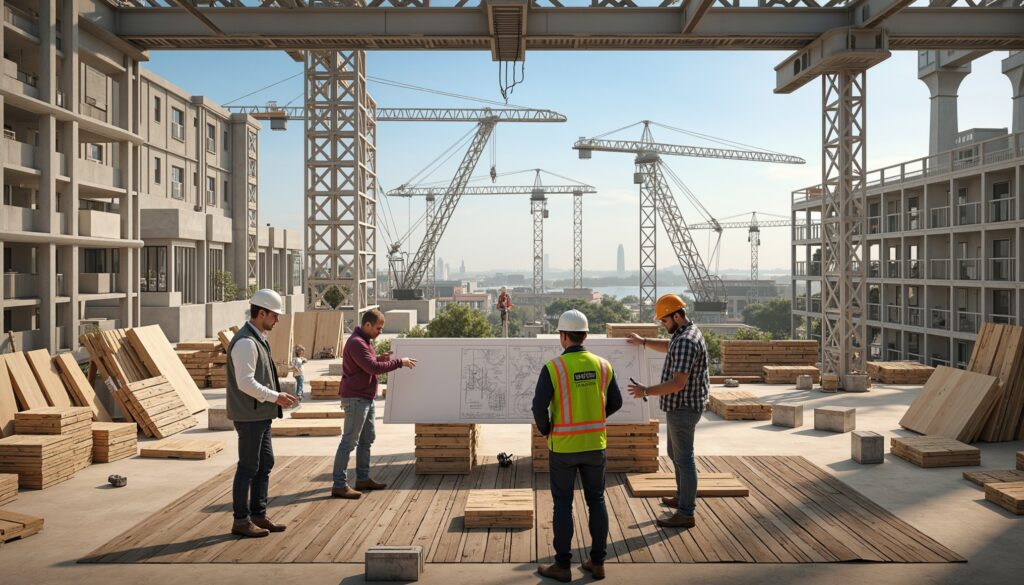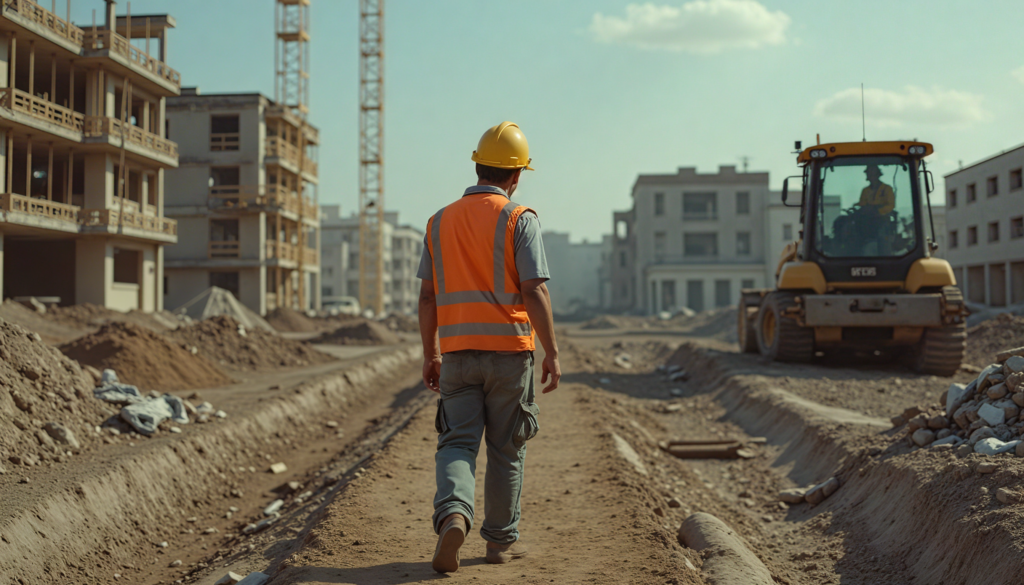In the world of construction, mastering your construction timeline is essential for ensuring that projects are completed on time, within budget, and to the satisfaction of all stakeholders.
A well-structured timeline not only helps in managing resources but also aids in communication and coordination among various teams involved in the project.
In this article, we will explore the importance of a construction timeline, outline key phases, discuss how to set realistic deadlines and milestones, identify effective tools for timeline management, highlight common challenges, and conclude with best practices for finalizing your project.

Key Takeaways
- A construction timeline is crucial for keeping projects on track and within budget.
- Recognizing the key phases of a construction timeline helps in planning and execution.
- Setting realistic deadlines and milestones ensures project feasibility and accountability.
- Utilizing tools and software for timeline management enhances efficiency and collaboration.
- Addressing common challenges proactively can prevent delays and setbacks in construction projects.
Understanding the Importance of a Construction Timeline
When embarking on any construction project, be it residential or commercial, having a well-defined construction timeline is crucial for success.
A construction timeline serves as a roadmap, guiding all stakeholders through the various phases of the building process.
It not only outlines the schedule of activities but also sets expectations for project completion.
A detailed construction timeline helps in identifying potential bottlenecks, allocating resources efficiently, and ensuring that all tasks are coordinated effectively.
By adhering to this timeline, project managers can mitigate delays, control costs, and achieve a smoother workflow.
Furthermore, staying on track with the construction timeline builds trust with clients and stakeholders, as it showcases commitment to timely delivery and quality workmanship.
In summary, a carefully crafted construction timeline is indispensable for any successful construction endeavor.
Key Phases in a Construction Timeline
When embarking on any real estate project, understanding the construction timeline is crucial for both developers and buyers interested in Costa Rica real estate.
This timeline generally unfolds in several key phases, each critical for ensuring the project’s success.
The first phase involves initial planning and securing necessary permits, which can take several months depending on local regulations.
Once approved, the second phase kicks off with site preparation and foundation work, where the groundwork for the structure is laid.
Following this, the third phase moves into framing, where the skeleton of the building is constructed, allowing for a visual representation of the final design.
Next comes the installation of utilities, such as plumbing and electrical systems, during the fourth phase.
This is followed by the fifth phase, where interior and exterior finishes are applied, bringing the design to life.
Finally, the last phase in the construction timeline encompasses inspections and final touches, ensuring the property meets all safety and quality standards.
By familiarizing themselves with these key phases, those interested in Costa Rica real estate can better anticipate project timelines and navigate the construction process efficiently.
‘The road to success is dotted with many tempting parking spaces.’ – Will Rogers

Setting Realistic Deadlines and Milestones
When embarking on a construction project, it’s crucial to establish a solid construction timeline that outlines realistic deadlines and milestones.
This not only keeps your project on track but also helps manage stakeholder expectations effectively.
Start by breaking down the entire process into distinct phases, such as planning, design, construction, and final touches.
Then, assign specific deadlines to each phase while considering potential delays caused by factors like weather conditions, permitting processes, or supply chain issues.
Additionally, set milestones at critical points in the project to assess progress and make adjustments as necessary.
By clearly defining your construction timeline with achievable goals, you’re able to maintain control over the project and ensure a smoother completion.
Tools and Software for Effective Timeline Management
Effective timeline management is crucial to the successful completion of any construction project, and choosing the right tools and software can make a significant difference.
A reliable construction timeline software enables project managers to visualize project milestones, track progress, and allocate resources efficiently.
Popular options include Microsoft Project, which offers robust scheduling capabilities, and Trello, which uses boards and cards for easy task management.
Additionally, cloud-based platforms like Procore provide real-time collaboration features, allowing teams to update timelines as changes occur.
By leveraging these tools, construction professionals can ensure their projects stay on track, ultimately leading to timely completions and satisfied stakeholders.

Common Challenges and How to Overcome Them
When navigating the complexities of Costa Rica real estate, understanding the construction timeline is crucial for prospective property buyers and investors.
One common challenge that individuals face during this process is unforeseen delays in construction, which can significantly impact budgets and project completion dates.
To counteract this issue, it’s essential to work with reputable contractors who have a track record of adhering to timelines.
Additionally, setting realistic expectations from the outset can mitigate potential frustrations.
Ensuring thorough planning and permitting prior to the start of construction can also streamline the process.
By keeping these strategies in mind, you can effectively manage and overcome the challenges associated with construction timelines in Costa Rica real estate.
Finalizing Your Project: Reviewing the Timeline and Lessons Learned
Finalizing your project involves a thorough review of the construction timeline and the lessons learned along the way.
A well-structured construction timeline is not just a schedule; it is a blueprint for success that outlines each phase of the project, from groundbreaking to completion.
By revisiting the timeline, stakeholders can identify milestones that were met or missed, analyze delays, and evaluate the efficiency of resource allocation.
This reflection is crucial in understanding what went well and what could have been improved, offering valuable insights for future projects.
Additionally, documenting lessons learned ensures that your team can capitalize on successes and avoid repeating past mistakes, ultimately enhancing project management practices.
Whether you’re a developer, contractor, or investor, reviewing the construction timeline at the project’s conclusion can inform better decision-making in upcoming ventures.
Frequently Asked Questions
Why is having a construction timeline important?
A construction timeline is crucial as it helps ensure that projects stay on schedule, allocate resources effectively, and identify potential delays early on.
Having a clear timeline allows for better communication among team members and stakeholders.
What are the key phases in a construction timeline?
The key phases typically include planning, design, procurement, construction, and project closeout.
Each phase has its own set of tasks and milestones that are essential for tracking progress.
How can I set realistic deadlines for my construction project?
To set realistic deadlines, consider factors such as project scope, available resources, weather conditions, and potential risks.
It’s also helpful to break down the project into smaller tasks and set deadlines for each to ensure that the overall timeline remains achievable.
What tools or software can help manage a construction timeline effectively?
There are several tools available for managing construction timelines, including project management software like Microsoft Project, Trello, or Primavera P6.
These tools allow for easy scheduling, task assignment, and progress tracking.
What are some common challenges when managing a construction timeline, and how can I overcome them?
Common challenges include unexpected delays, resource shortages, and communication issues.
To overcome these challenges, maintain flexibility in your timeline, ensure clear communication among all parties involved, and regularly review progress to address any issues proactively.





